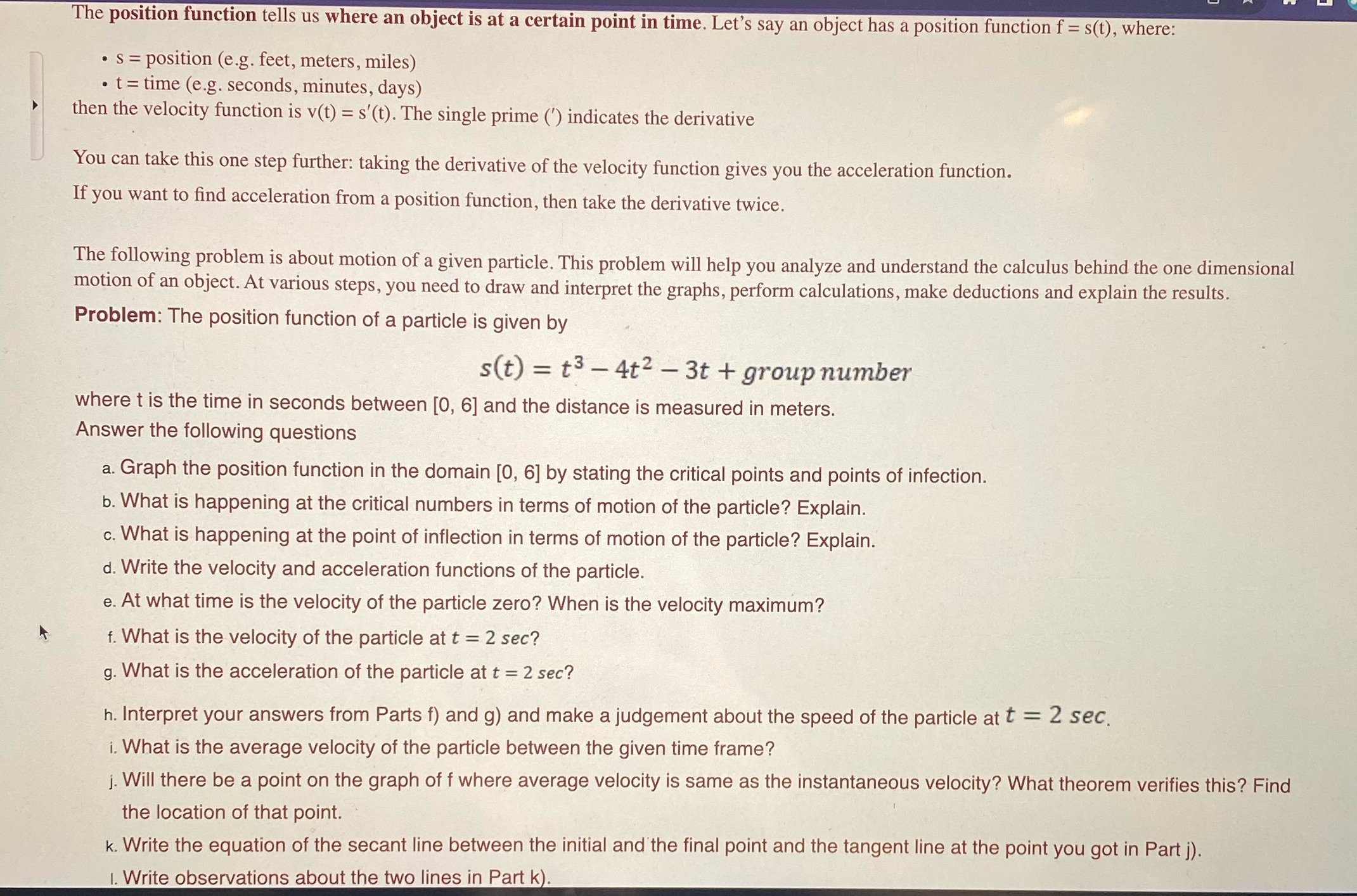
Group number is "1"
The position function tells us where an object is at a certain point in time. Let's say an object has a position function f = 50), where: - s = position (cg. feet, meters, miles) - t = time (e.g. seconds, minutes, days) then the velocity function is v(t) = s'(t). The single prime (') indicates the derivative You can take this one step further: taking the derivative of the velocity function gives you the acceleration function. If you want to nd acceleration from a position function, then take the derivative twice. The following problem is about motion of a given particle. This problem will help you analyze and understand the calculus behind the one dimensional motion of an object. At various steps, you need to draw and interpret the graphs, perform calculations, make deductions and explain the results. Problem: The position function of a particle is given by 50:) = t3 4t2 3t + groupnumber wheret is the time in seconds between [0, 6] and the distance is measured in meters. Answer the following questions a. Graph the position function in the domain [0, 6] by stating the critical points and points of infection. b. What is happening at the critical numbers in terms of motion of the particle? Explain. c. What is happening at the point of inflection in terms of motion of the particle? Explain. d. Write the velocity and acceleration functions of the particle. 9. At what time is the velocity of the particle zero? When is the velocity maximum? * i. What is the velocity of the particle at t = 2 sec? 9. What is the acceleration of the particle at t = 2 sec? h. Interpret your answers from Parts f) and g) and make aiudgement about the speed of the particle at t = 2 SEC. i, What is the average velocity of the particle between the given time frame? j. Will there be a point on the graph of f where average velocity is same as the instantaneous velocity? What theorem verifies this? Find the location of that point. k. Write the equation of the secant line between the initial and the final point and the tangent line at the point you got in Part j). I. Write observations about the two lines in Part ki








